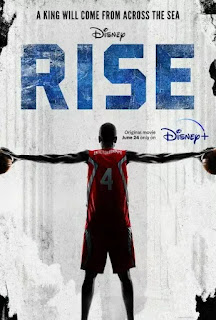
Have you ever had a moment where you’re trying to describe an artist, and you call them an “underground rapper,” only for the conversation to turn into a debate about what “underground” actually means in 2021?
Some people may call Westside Gunn “underground” because of Griselda’s gritty, lyrical style, but he’s not exactly under the radar. He’s a former Shady Records signee who’s sat front row at Paris Fashion Week and boasts close relationships with superstars like Jay-Z, Drake, Kanye West, and Tyler, the Creator.
Jay Electonica’s music is considered to be in the lineage of underground cult heroes like Killah Priest and Dead Prez—but he just did a whole album with Jay-Z. MCs like R.A.P. Ferreira, Earl Sweatshirt, and Billy Woods create abstract, left-of-center work that would have found a natural home at a label like Rawkus Records in the ’90s, but the internet’s direct-to-consumer model now allows them to access millions of potential listeners in a way underground artists at indie labels have long had a hard time doing.
At one point, the underground rap community was an easily recognizable scene of acts and labels that couldn’t get the same distribution for their CDs that major label acts could. But the internet revolutionized music distribution at the click of a button. The digital evolution allowed artists to operate with a direct-to-consumer model, eliminating many of the corporate barriers that kept certain acts obscure. And now artists who make music that’s unabashedly crafted for mass appeal are utilizing the same stratagem as avant-garde artists who don’t even put hooks on their songs. And they’re all a TikTok trend away from a platinum single. Are they all “underground” in the same way? It’s difficult to explain exactly what the phrase means today.
Renowned A&R and executive Dante Ross thinks “underground rap means everything that’s not mainstream and has a somewhat determined ceiling.” Legendary indie rapper Slug says “the concept of underground rap is an identity thing [for] the advocate, the fan, all of us, to give us a sense of belonging.” Drew “Dru Ha” Friedman, co-founder of underground mainstay Duck Down Records, once saw the ‘90s underground scene as music where “you could just tell it wasn’t going to be mainstream.” Industry veteran Jonathan Tanners says underground rap was once “a cultural signifier of a code of conduct,” and believes now that the method of “how [music] reaches people has changed more so than some of the ideologies.”
Rising Charlotte rapper Mavi feels that the idea of underground rap is a more “descriptive than prescriptive” notion, and a “judgment made on the mix or the reach or style” of music. Griselda signee Rome Streetz calls the underground “the purest form of hip-hop, because it doesn’t really have any of those industry politics with it.” But Spotify’s Carl Chery is unsure if there’s even such a thing as underground rap in 2021. “Because when I think about the original definition and all the raps that made up underground rap in the ‘90s and the 2000s, the structure doesn’t exist now,” he explains.
t wasn’t always like that. In the ’90s, the underground rap scene was a network of artists, indie labels, DIY venues, zines, and college radio stations that operated below what Ross deemed the “ceiling” of mass distribution.







